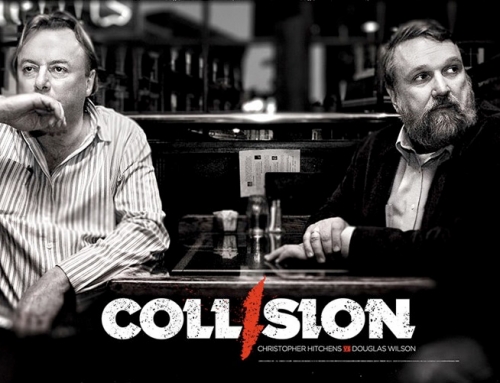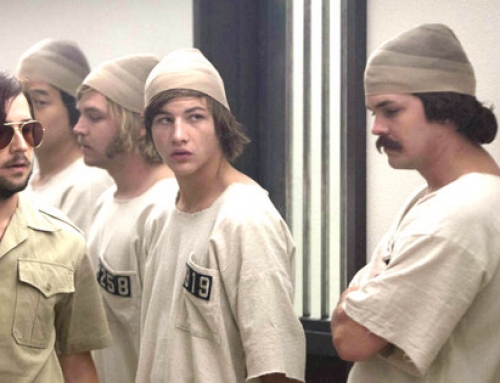Astronomy is a historical science because the distance scales involved are so immense that to look out into space is to look back into time. Even at the almost unfathomable speed of light at 300,000 kilometers per second, the sun is eight light minutes away, the nearest star is 4.3 light years away, the center of our Milky Way galaxy is about 27,000 light years away, the Andromeda galaxy is about 2.5 +million light years away, and the farthest object ever observed is about 13.8 billion light years away. Astronomers call this “lookback time”. It is an apt descriptor because it affords us an opportunity to look back at what happened in the past in order to put current events into proper context.
Consider the longing many people have for a peaceful past filled with bucolic scenes of pastoral bliss before the modern world dumped on us overpopulation and pollution, mass hunger and starvation, world wars and civil wars, riots and revolutions, genocides and ethnic cleansing, rape and murder, disease and plagues, and the existential angst that comes from mass consumerism and empty materialism. These “good old days” envisioned by so many beckon like a liberation. Surely things were better then than they are now, yes?
No.
Overall, for most people in the world today there has never been a better time to be alive than now. As I document in my 2008 book The Mind of the Market and in my 2015 book The Moral Arc, if you lived 10,000 years ago you would have been a hunter-gatherer who earned the equivalent of about $100 a year (extreme poverty is defined by the United Nations as less than $1.25 a day, or $456 a year) and the material belongings of your tiny band would have consisted of about 300 different items, such as stone tools, woven baskets, bows and arrows, clay pots, medicinal remedies, pets, food products, and articles of clothing made from animal hides. Today, the average annual income in the Western world is about $40,000 per person per year, and the number of available products is over 10 billion, as figured by the number of types of products designated by the universal product code (barcode) system whose 10-digit (one billion) limit was reached in 2008.
Most of this prosperity has happened over the past two centuries since the Industrial Revolution, and even more dramatic gains have been enjoyed over the last half century. From 1950 to 2000, for example, the per capita real Gross Domestic Product went from $11,087 (adjusted for inflation and computed in 1996 dollars) to $34,365, a 300 percent increase in comparable dollars! (See figure below). Not only is the average person today absolutely richer (by three times) than their parents and grandparents, more are moving up ever-expanding economic classes.
In 2000, one in four Americans earned at least $75,000 a year, putting them in the upper middle class, compared to a century before, in 1890, when that figure represented the income of the top one percent (in comparable dollars). That is a 25-fold expansion of the upper middle class, redrawing class boundaries and redefining what it means to be average. This has allowed more people to own their own homes, which have doubled in size in just the past half century, from about 1,100 square feet in the 1950s to over 2,200 square feet today. What’s more, a century ago only 15 percent of homes had central heating; today that figure is 95 percent. On the other end of the temperature scale, zero percent of our grandparents’ homes a century ago had air conditioning; today that figure is 80 percent. Such increases have driven up the value of homes, the average of which in 1950 was $44,600, compared to $119,600 in 2000 (in 2000 dollars).
What about income inequality and the gender difference in pay? There is a real and dramatic inequality of income between the top quintile and the bottom four quintiles, with the rich getting richer, but between 1979 and 2010 the bottom four quintiles also got richer—by 49 percent, 37 percent, 36 percent, and 45 percent respectively.
The gender income gap is also real, but shrinking. The median hourly earnings in 2012 dollars from 1980 to 2012 for women over age 16 went from a gap of $8 an hour in 1980 to $1.04 in 2012. Among 25–34 year old women, their percentage of men’s earnings in 2012 dollars went from 67 percent in 1980 to 93 percent in 2012. The gap should close to zero by 2020. And there’s never been so many job choices—500 years ago 90 out of 100 people worked on farms; today that figure is less than three. These figures from the Pew Research are encouraging:
Jesus said that one cannot live on bread alone, but our medieval ancestors did nearly that as over 80 percent of their daily calories came from the nine loaves a typical family of five consumed each day. Also devoured was 60 to 80 percent of a family’s income on food alone, the rest used for housing and clothing, leaving next to nothing for discretionary spending or retirement. This portrait of life in the Middle Ages is telling:
In the Middle Ages, in the unlikely event that you survived childhood and made it to 30 years of age the odds were stacked against you making it to your 40th birthday. For centuries human life expectancy bounced around between 30 and 40 years until the onset of the 20th century, after which the average went from 41 in 1900 to the high 70s and low 80s in the modern Western world in 2000. Today, no country has a lower life expectancy than the country with the highest life expectancy did 200 years ago. This figure captures the “hockey stick” of life expectancy since the year zero:
Back then, around the time of the Black Death in the 14th century, if one of the countless diseases and plagues that were wont to strike people down passed over your house, if you were a young male you were 100 times more likely to die violently than today—either murdered in a dispute with a family member or cross-village rival, or in one of the endless great-power wars that now fill European history books (but not their newspapers). This graph from Steven Pinker is revealing:
That’s right, despite the nightly news stories about murders in cities like Ferguson, and reports of rampant rapes on college campuses, crime is down. Way down. Since the crime wave of the 1970s and 1980s, homicides plummeted between 50 and 75 percent in such major cities as New York, Los Angeles, Boston, Baltimore, and San Diego. Teen criminal acts fell by over 66 percent. Domestic violence against women dropped 21 percent. And according to the U.S. Department of Justice the overall rate of rape has declined 58 percent between 1995 and 2010, from 5.0 per 1,000 women age 12 or older to 2.1.
Ever since the recession it seems like all we hear about is how long we all have to work to maintain our standard of living, but looking back centuries instead of decades the total hours of life spent working has been steadily declining. In 1850, for example, the average person invested 50 percent of his or her waking hours in the year working, compared to only 20 percent today. Fewer working hours means more time for doing other things, including doing nothing. In 1880, the average American enjoyed just 11 hours per week in leisure time, compared to today’s 40 hours per week. This graph from Max Roser’s site, Our World in Data, is telling:
That leisure time can be spent in cleaner environments. In my own city of Los Angeles, for example, in the 1980s when I was a bicycle racer out training every day I had to put up with an average of 150 “health advisory” days per year and 50 “stage one” ozone alerts caused by all the fine particulate matter in the air—dirt, dust, pollens, molds, ashes, soot, aerosols, carbon dioxide, sulfur dioxide, and nitrogen oxides—AKA smog. Today, thanks to the Clean Air Act and improved engine and fuel technologies, in 2013 there was only one health advisory day, and 0 stage-one ozone alerts. Across the country, even with the doubling of the number of automobiles and an increase of 150 percent in the number of vehicle-miles driven, smog has diminished by a third, acid rain by two-thirds, airborne lead by 97 percent, and CFCs by virtually 100 percent.
Rewind the tape to the Middle Ages, the Early Modern Period, or the Industrial Revolution and play it back to see what life was really like in a world lit only by fire and when only the tiniest fraction of the population lived in relative comfort while the vast majority toiled in squalor, lived in poverty, and expected half their children would die before adulthood. This figure of people toiling in the field captures what life was like back then:

Medieval illustration of men harvesting wheat with reaping-hooks, on a calendar page for August. Queen Mary’s Psalter. (Public domain, via Wikimedia Commons)
Very few people ever traveled beyond the horizon of their landscape, and if they did it was either on horseback or, more likely, on foot. George Washington’s troops marching for American freedom moved no faster than Caesar’s troops legging it for conquest. Over all those long-gone centuries no one enjoyed even the most basic creature comforts we all take for granted today. No Egyptian pharaoh, Greek king, Roman ruler, Chinese emperor, Ottoman sultan, or modern dictator, demagogue, president or prime minister had anything like most quotidian technologies and public health benefits that we take for granted today. Medicine and dentistry alone should discourage us all to step into a time machine to travel to anytime in the past to live.
These really are the good old days.










